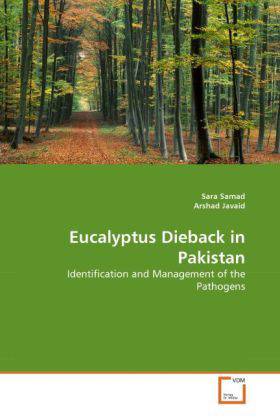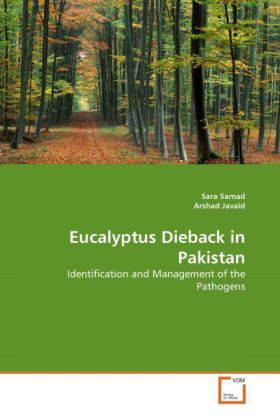
- Afhalen na 1 uur in een winkel met voorraad
- Gratis thuislevering in België vanaf € 30
- Ruim aanbod met 7 miljoen producten
- Afhalen na 1 uur in een winkel met voorraad
- Gratis thuislevering in België vanaf € 30
- Ruim aanbod met 7 miljoen producten
Zoeken
Eucalyptus Dieback in Pakistan
Identification and Management of the Pathogens
Sara Samad, Arshad Javaid
Paperback | Engels
€ 48,45
+ 96 punten
Omschrijving
Eucalyptus is one of the most important and widely planted tree genera having about 900 species and sub- species. It is a group of ever green aromatic plants native to Australia and Tasmania with a few species occurring naturally in New Guinea, the Philippines, and Timor. These valuable tree species are used for timber, paper pulp, fuel, water and wind erosion control, and as sources of essential oils. Eucalyptus species are suffering from dieback these days. Both fungi and bacteria are responsible for dieback of these trees. Fungi cause serious damage on Eucalyptus, especially in commercial plantations of susceptible species or clones. The present study was designed to diagnose what pathogens are primarily responsible for dieback of Eucalyptus in different areas of Punjab, Pakistan, to determine the level of genetic diversity among the pathogens using RAPD analysis, and management of the pathogens by natural antifungal compounds of Azadirachta indica, Syzygium cumini and Melia azedarach. This book is especially useful for forest managers, plant pathologists and owners of Eucalyptus plantations.
Specificaties
Betrokkenen
- Auteur(s):
- Uitgeverij:
Inhoud
- Aantal bladzijden:
- 84
- Taal:
- Engels
Eigenschappen
- Productcode (EAN):
- 9783639333664
- Verschijningsdatum:
- 24/02/2011
- Uitvoering:
- Paperback
- Formaat:
- Trade paperback (VS)
- Afmetingen:
- 152 mm x 229 mm
- Gewicht:
- 136 g

Alleen bij Standaard Boekhandel
+ 96 punten op je klantenkaart van Standaard Boekhandel
Beoordelingen
We publiceren alleen reviews die voldoen aan de voorwaarden voor reviews. Bekijk onze voorwaarden voor reviews.











